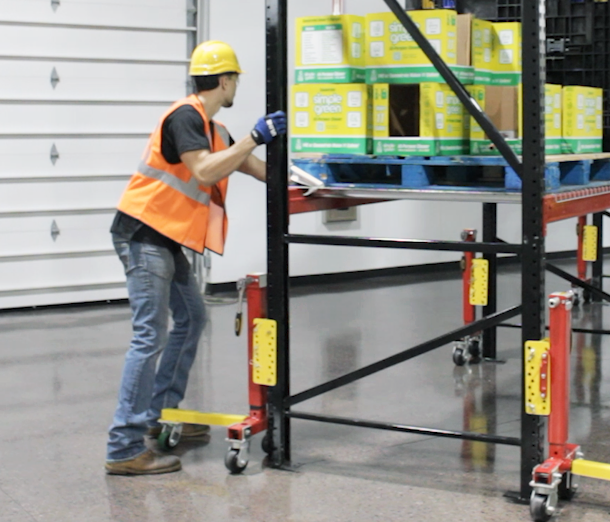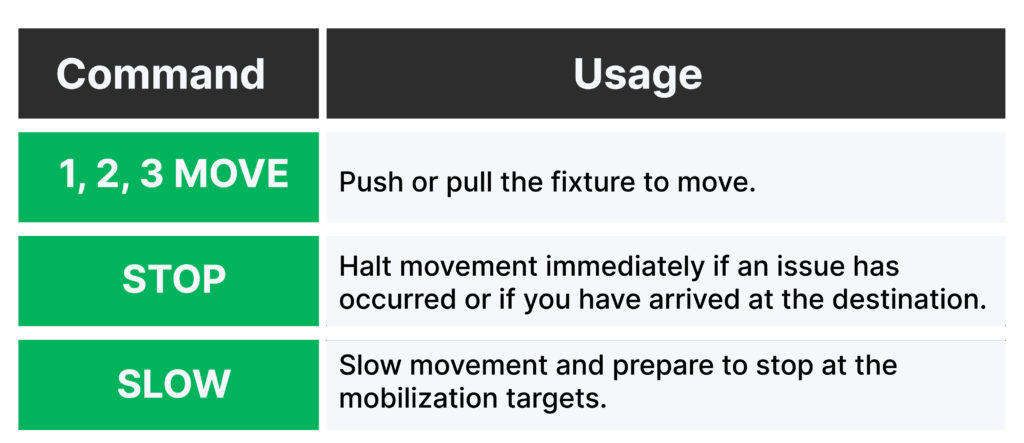
Mobilization posture & communication
Using correct posture during fixture movement is essential for both safety and performance. Proper body positioning helps prevent injury and ensures a more stable, controlled mobilization.
Proper mobilization posture
Maintaining proper posture throughout the mobilization process is essential for staying safe and working efficiently. These simple but important habits can make a big difference in both your safety and the success of the move.

Use the following posture guidelines throughout the entire mobilization process:
- Always keep your back straight to avoid strain, and lift your chest upward to help maintain good spinal alignment.
- When lifting or lowering equipment, bend both knees to reduce pressure on your back and joints.
- As you guide or stop a moving fixture, keep your front knee bent for added control and stability. Your feet should maintain flat on the ground and slightly turned outward to provide a solid base. Be sure to distribute your weight evenly between both feet while moving to stay balanced and prevent injury.
These simple but important habits can make a big difference in both your safety and the success of the move.
Directional communication fundamentals
When participating in fixture mobilization, communication can affect the flow of the move and the success of the project. You, your teammates, and your supervisor should use the following standard commands during the project:

Clear communication is key when coordinating movement. Use agreed-upon terminology to guide your team during mobilization. Common directional terms include:
- Straight movement: Move the fixture forward or backward without turning.
- Diagonal: Shift the fixture toward one corner or at an angle.
- Rotating: Turn the fixture clockwise or counterclockwise to a specific angle.
- Pivoting: Rotate the fixture while keeping one corner stationary.
Remember, stay vocal and responsive during all directional changes to maintain alignment and safety.

